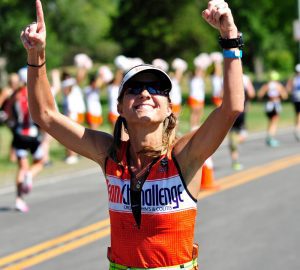Sweat drips down your face as you feel the weight of each step pull you down. With two kilometers left, you take a deep breath and prepare to run a personal best. Running is inexpensive and can be performed almost anywhere. At the elite level, athletes are running times that can seem superhuman. The training methods required to reach competitive levels are numerous. Many training methods are beneficial and as interest for the sport grows so too does the way we train ourselves and our athletes. The use of a Non-Motorized Curved Treadmill is one method of training that is gaining traction in the running community.
Non-Motorized Curved Treadmill (NMCT), unlike flat-belt treadmills, use a concave belt design powered solely by the individual using it. This form factor induces increased cardio-metabolic demands shown through greater oxygen uptake HR (Heart Rate), RPE (Rate of Perceived Exertion) and lowers StO2 values (Franks, Kelly A et al 2012). The majority of tests conducted have had fairly active participants in their time trials.
In a study conducted by the Journal of Sports Science & Medicine, they found that the 5-km time-trial performance showed a decrease of ~20% (272 s) when performed on the NMCT. Similarly, the peak velocity obtained during an incremental exercise test on an NMCT was slower (~2 km/h) to that achieved on the MTR. In each of these scenarios speed was monitored to keep consistency and all participants ran at the same pace. Due to the mechanics of the NMCT Increased Rate of Perceived Exertion measured on the Borg Scale, participants felt they were working harder at the same intensity. The values collected showed that heart rate increased by 22% and relative VO2 was 41% greater at the same speed on a curved treadmill. This lead to a calorie expenditure of about 30-40% higher.
The increased physical exertion while running on the NMCT is in part due to its design where there is a higher resistance of the treadmill belt and the need to accelerate the belt between each step. The force required to maintain a constant speed on the NMCT increases with the runner’s mass and the individual must continuously run on the balls of their feet to continue moving. This change in mechanics reduces the impact on joints and improves running performance. In addition, the core and trunk are engaged more forcing individuals to maintain the proper posture required to run at an ergonomically correct angle. With all of the research conducted on the NMCT, its benefits are not debatable. The increased physical exertion due to the mechanics of the belt-design results in a more strenuous workout.
In my opinion, this piece of equipment is very beneficial for gait and stride improvement. The way in which it forces the individual to utilize their core and trunk to remain upright, rather than landing on their heels and shifting the center of gravity backward, helps reinforce the proper neuromuscular behavior required for tasks such as running, jogging and walking. These benefits can also be applied to patients entering rehabilitation. Through personal experience, I can attest to the difference in difficulty compared to a regular motor treadmill.
Curved treadmills when utilized correctly can make you work harder and burn more calories, all while improving form due to their unique structure. As such, running on an Curved Treadmill is a great addition to any workout. Burn more, feel more and become better. You’ll always stay ahead of the curve when you’re running on it.
By: Ene Mwadi









